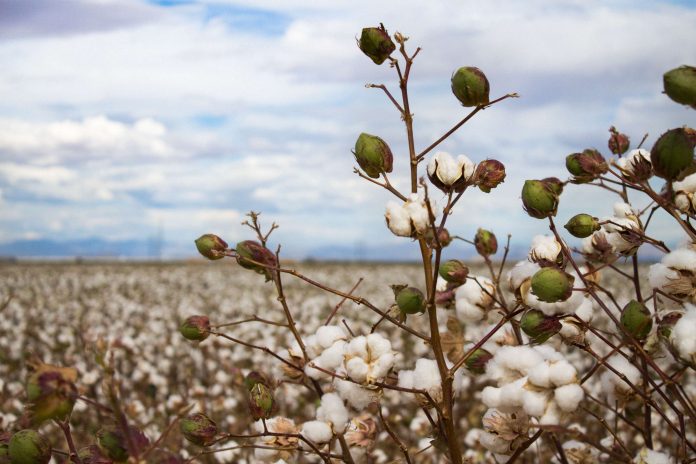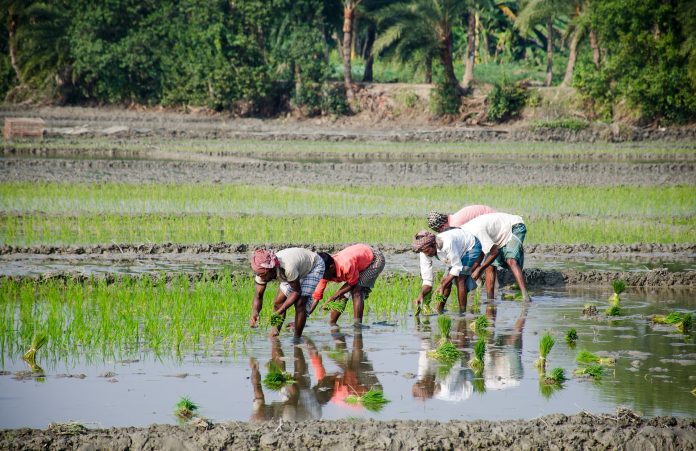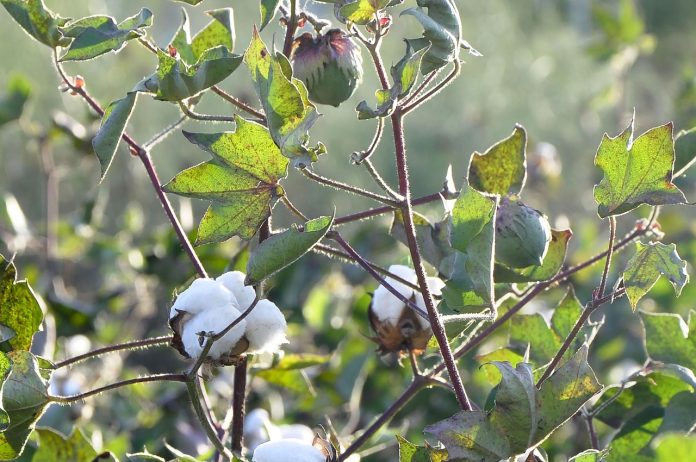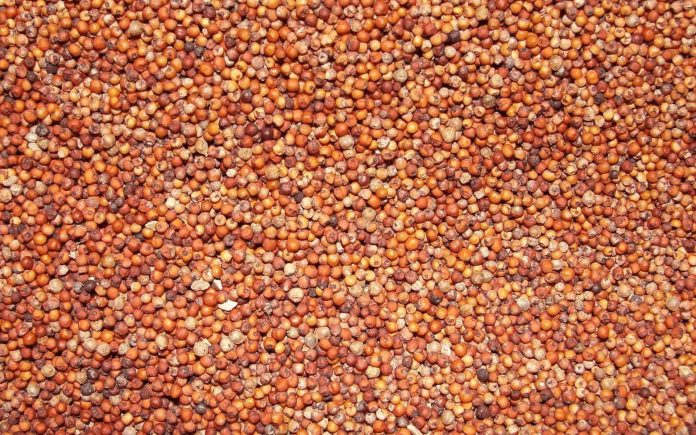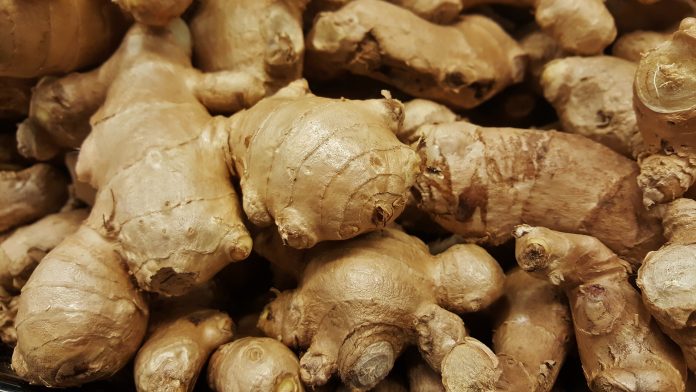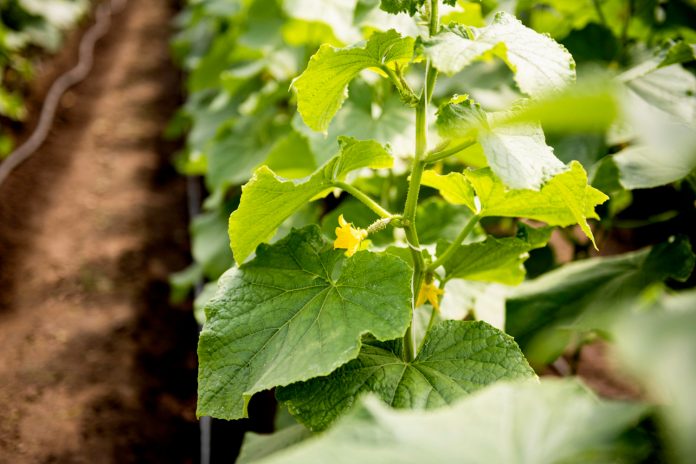Spodoptera litura, commonly known as tobacco caterpillar or tobacco cutworm, is a notorious pest that poses a significant threat to cotton cultivation by impacting crop yield and quality. This polyphagous insect feeds voraciously on cotton leaves leading to defoliation and reduced yields. With its ability to complete multiple generations within a season and the challenge of insecticide resistance, effective management strategies are crucial. This article will explore the impact of tobacco caterpillars on cotton crops and various management measures to tackle their infestations.
The larva of the tobacco caterpillar can be identified by its pale greenish color with dark markings and adult moths have wavy white markings on a brown forewing. The larvae feed mainly during the night and seek protection by taking refuge in the soil during the day. Warm and humid climate, monocropping and late sowing are some of the favorable conditions for tobacco caterpillar infestation.
Type of Infestation
Tobacco caterpillar infests the cotton crop by feeding on the leaves, leading to defoliation and skeletonization of leaves.
Scientific Name: Spodoptera litura
Most Affected States
The exact distribution of Tobacco caterpillar in India is not well documented. However, they are known pests of cotton plants and are likely all cotton growing regions of the country.
Symptoms of Tobacco Caterpillars in Cotton
- In the initial stage larvae feed gregariously on the leaf where the egg mass is deposited.
- They scrape the epidermal layer of the leaves, resulting in skeletonization leaving only veins and midribs.
- Skeletonized leaves may eventually dry out.
- In later stages, larvae consume most of the leaf tissues and in severe cases only stem and side shoots can be seen remaining in the field without any leaf or bolls.
- Once squares, flowers and bolls emerge, the larvae prefer to eat these rather than leaves. They bore into them, consuming the internal contents completely, which leads to the shedding of squares and young bolls.
Tobacco Caterpillars in Cotton Control Measures
Effective management of Tobacco caterpillars requires a combination of cultural, Physical, Mechanical, biological and chemical control measures.
Cultural Measures
- Deep summer ploughing exposes the pupae to natural enemies and high temperatures.
- Grow trap crops like castor along the borders of cotton field.
- Early planting can avoid peak populations of tobacco caterpillars.
- Removing the weeds and other debris can reduce the incidence of tobacco cutworms.
- Proper nutrition management, including balanced fertilization and irrigation can also help to reduce the susceptibility of cotton plants to Spodoptera attacks.
- Erect bird perches to encourage predatory birds.
Tobacco Caterpillars in Cotton Physical Measures
- Light Traps play a major role in monitoring and killing adult tobacco caterpillar. Install Farmoguard Solar Light Trap in the fields at the rate of one per acre.
Mechanical Measures
- Handpicking the caterpillars and destroying them is an effective way to reduce the population of tobacco cutworms.
- Collect and destroy the egg masses from cotton as well as castor crops.
- Tapas Tobacco Caterpillar Lure can be used to attract and trap adult Spodoptera moths. Install Funnel Trap with Spodo-O-Lure at the rate of 6 per acre for effective trapping.
Tobacco Caterpillars in Cotton Biological Measures
- Delfin Bio Insecticide contains Bacillus thuringiensis var kurstaki which when sprayed at the rate of 1 gm per liter of water can effectively control Spodoptera in cotton.
- Albata Royal Larvend is a bio larvicide or bio pesticide containing 100% organic plant derived solutions that is highly effective against all pests going through the larval stage. The recommended dosage is 2 ml per liter of water. In case of heavy infestation, repeat the spray every 7-10 days.
- SUN BIO SLNPV is a viral insecticide based on Polyhedral Occluded Bodies of Nuclear Polyhedrosis Virus of Spodoptera litura. When sprayed, caterpillars get infected by virus and eventually die. For better results, spray SUN BIO SLNPV at 0.5 to 1ml per liter of water in the early morning or late evening hours.
- Ecotin Insecticide is a neem based biological insecticide containing Azadirachtin, which can be used effectively to control Spodoptera. The recommended dosage is 0.4 – 0.7ml per liter of water.
Chemical Measures
Chemical measures include the application of commercial insecticides to control tobacco cutworms. Insecticides that can be used to control are mentioned below,
| Product Name | Technical Content | Dosage |
| Coragen Insecticide | Chlorantraniliprole 18.5% SC | 0.3 ml/lit of water |
| Katyayani Chakrawarti | Thiamethoxam 12.6% + Lambda cyhalothrin 9.5% ZC | 0.4 ml/lit water |
| Largo Insecticide | Spinetoram 11.7% SC | 0.9 ml/lit water |
| Fluton Insecticide | Flubendiamide 20% WG | 0.5 gm/lit water |
| Godrej Gracia Insecticide | Fluxametamide 10% EC | 0.8 ml/lit water |
| Starclaim Insecticide | Emamectin benzoate 5% SG | 0.5 gm/lit water |
| Keefun Insecticide | Tolfenpyrad 15% EC | 2 ml/lit water |
| Benevia Insecticide | Cyantraniliprole 10.26% OD | 1.8 ml/lit water |

